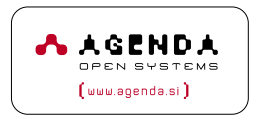Slovenian national police force uses Red Hat for microservices
To improve application delivery, infrastructure complexity, and team communication, the Slovenian National Police Force sought to migrate from its legacy mainframe IT environment to enterprise open source middleware technology. Using Red Hat JBoss Enterprise Application Platform, Red Hat AMQ, and Red Hat Smart Management, the police force created a microservices-based architecture to support faster, more collaborative development and delivery. Together with new best practices and standards, this application environment helps the police force launch new, critical applications in weeks.
Benefits:
- Improved application delivery time with microservices-based architecture and collaborative approach
- Simplified system management with integrated solution
- Improved recruitment of skilled talent looking to work with innovative open source technology
Simplifying infrastructure management for better team integration and responsiveness
The Slovenian National Police Force is the country’s main law enforcement agency. Operating at state, regional, and local levels, it is responsible for guarding Slovenia’s constitution and democratic political system, human rights, fundamental freedoms, and societal values.
Keeping teams and departments connected is crucial to timely responses to potential safety threats or other citizen needs. However, as the force’s work became increasingly digital, its mainframe infrastructure became harder to manage. Skilled staff to maintain the technology was difficult to find, and vendor lock-in created potential cost challenges and barriers to technology innovation.
To improve staff communication and system integration, the police force sought to move from its legacy environment—including JavaServer Faces (now Jarkarta Server Faces) interfaces, SOAP messaging, and JavaServer Pages (now Jakarta Server Pages) for application job batching—to a microservices-based infrastructure with middleware and integration technology.
“Our mix of technologies was extremely difficult to maintain and required a variety of specialist developers,” said Jernej Razboršek, Senior Police Inspector at the Republic of Slovenia Ministry of the Interior, Police, General Police Directorate, IT and Telecommunications Office, ICT Infrastructure Division, Server Systems Section. “And we didn’t want to be forced to migrate our infrastructure because a vendor decided to stop developing their product. We also wanted more stability but more flexibility.”
Adopting a microservices-based approach with Red Hat application platform, integration, and management technologies
After completing a proof of concept (POC), the police force decided on Red Hat technology.
“We wanted to explore open source software because of the freedom it provides,” said Razboršek. “It was clear from the beginning that Red Hat was a leading candidate for our migration from our mainframe environment to enterprise open source middleware. We found Red Hat products robust and easy to use, and we found Red Hat as a company to be knowledgeable and supportive.”
Initially, the police force deployed Red Hat Virtualization as a foundation for a future Red Hat middleware solution, followed by Red Hat JBoss Enterprise Application Platform (EAP), an application server runtime platform for building, deploying, and hosting Java™ Enterprise Edition (now Jakarta Enterprise Edition) applications and services. Red Hat AMQ provides a flexible messaging platform for reliable information delivery to support real-time integration, and Red Hat Smart Management (formerly Red Hat Satellite) is a comprehensive management solution to keep Red Hat environments running optimally.
Agenda Open Systems, the first Red Hat partner in Slovenia, helped the police force set up and expand its Red Hat infrastructure, including ongoing maintenance. In addition, an in-house team wrote Ansible® Playbooks to automate setup of the new JBoss EAP deployment.
The police force’s development team then began refactoring more than 100 existing applications into microservices and migrating them to the Red Hat platform. New application creation has been standardized on JBoss EAP using a microservices-based architecture. “The new architectural design is much simpler and cleaner,” said Razboršek.
Currently, more than ten applications have been launched in the new environment, including solutions for cataloging firearm inventory in police stations, quarantine decision making and documentation, and fingerprint recognition.
Enhancing processes and collaboration to respond to citizens needs faster
Improved application delivery time with agile, efficient approach
The Slovenian National Police Force can now develop and launch new applications in weeks. JBoss EAP provides support for DevOps practices, such as continuous integration and delivery (CI/CD) to help the police force respond quickly to urgent situations. For example, in response to the COVID-19 pandemic, the police force’s developers needed to quickly develop an application for border police that could issue quarantine documentation and integrate with Slovenia’s National Institutes for Disease Control.
“We built that application from start to finish in less than three weeks. We expect that the number of apps we have in development will triple in the next year,” said Razboršek.
Simplified system management with integrated solution
The Slovenian National Police Force has now simplified deployment, scaling, and management of its application environments—including testing, staging, and production—by standardizing on Red Hat technology. JBoss EAP provides a consistent foundation across the force’s server environment, and creating a flexible messaging platform with Red Hat AMQ has helped the police force establish reliable communications between systems.
“Our main concern for message queues is always reliance,” said Razboršek. “With Red Hat AMQ, data that is supposed to be delivered is delivered. Being able to quickly set up reliable messaging means our development team can be more responsive to potential safety threats and meet citizen needs for timely services.”
Red Hat Smart Management helps the force manage its Red Hat software, including improved deployment, organization, and management of the virtual machines (VMs) in Red Hat Virtualization. Now, IT operations teams at the Slovenian National Police Force can now more easily provision, configure, and update systems to optimize performance and stay compliant with government best practices for application development.
Gained access to open source community innovation, backed by enterprise software support
Adopting enterprise open source technology from Red Hat has helped the police force focus on innovation, without life cycle uncertainty. With full visibility into code in open source communities, the security department and other teams can retain control and more effectively prepare for change.
“Knowing that the software we use is open source but also appropriately supported gives us peace of mind,” said Razboršek. “And a lot of Red Hat software product developers are active on community project support forums.”
Now, the Slovenian National Police Force’s IT teams are using their experience with open source technology to find new tools and approaches for collaboration based on community best practices.
Attracted new, skilled talent to support innovative service development
Moving to a platform built with Red Hat’s enterprise open source technology is also helping to position the police force as an exciting place to work with new technologies on projects of national importance. As a result, the shift to open source software will help the police force attract new, skilled talent to accelerate its digital transformation efforts.
“While the public sector may struggle to compete with technology firms in terms of salary, we can create a workplace that offers a similar experience: doing important work with the latest methods and open source technologies,” said Razboršek.
Industry
Public sector
Headquarters
Ljubljana, Slovenia
Size
8,500 employees
Software
Red Hat® JBoss® Enterprise Application Platform, Red Hat AMQ, Red Hat Satellite
Existing Red Hat software
Red Hat Virtualization
Partner
Agenda Open Systems
The border police application was the first time we saw how fast we could develop on Red Hat technology. We built the application from start to finish in less than three weeks.
“We found Red Hat products robust and easy to use, and we found Red Hat as a company to be knowledgeable and supportive.
Building on success by expanding open source adoption
The police force plans to expand its enterprise open source infrastructure. It recently adopted Red Hat Ansible Automation Platform to set up JBoss EAP clusters quickly—in 30-45 minutes—and EnterpriseDB clusters and has used Ansible to use and modify playbooks. These playbooks also serve as documentation of standardized processes for easy reference.
The police force is evaluating the addition of Private Automation Hub, Red Hat’s self-hosted Ansible content management system for Ansible Playbooks and other automation content. It is also considering adopting container technology with Red Hat OpenShift® and evolving to application programming interface (API) development with Red Hat 3scale API Management.
“Moving from monolithic applications to microservices with Red Hat has brought major improvements to our work,” said Razboršek. “We have many more applications in testing and development, and we continue to benefit from faster development capabilities. Red Hat remains critical to our plans for the future.”
About the Slovenian National Police Force
The Slovenian National Police Force is the government agency that is responsible for law enforcement in Slovenia. As an independent body within the framework of the Ministry of the Interior, the force has around 8,500 personnel responsible for protecting citizens’ lives, personal safety, and property, and protecting and controlling state borders and more.
About Agenda Open Systems
Agenda Open Systems is the leading Slovenian Linux® and open source technology integrator with some of the largest open source projects in Slovenia. Working with Red Hat since 2004, Agenda is the first Red Hat partner in Slovenia.
About Red Hat Innovators in the Open
Innovation is the core of open source. Red Hat customers use open source technologies to change not only their own organizations, but also entire industries and markets. Red Hat Innovators in the Open proudly showcases how our customers use enterprise open source solutions to solve their toughest business challenges. Want to share your story?


